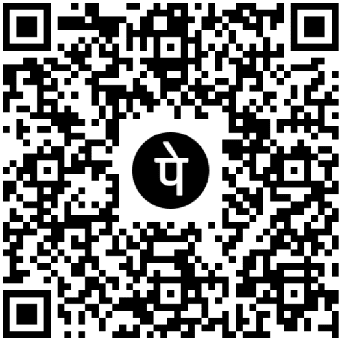Read more
Non-Fungible Tokens (NFTs) have quickly emerged as one of the most transformative innovations in the digital world. From artwork and music to gaming and virtual real estate, NFTs are changing the way people view, buy, and sell digital assets. But what exactly are NFTs, and how do they work? In this article, we’ll break down the technology behind NFTs, explore their use cases, highlight major platforms, delve into controversies, and look ahead to their potential future.
What Are NFTs? A Breakdown of the Technology Behind Non-Fungible Tokens
At the core of NFTs is the concept of non-fungibility, meaning that each token is unique and cannot be exchanged on a one-to-one basis with another token. This is in contrast to cryptocurrencies like Bitcoin or Ethereum, which are fungible—one Bitcoin is the same as another. NFTs represent ownership of a specific digital item, be it a piece of artwork, a music file, or a virtual in-game asset.
NFTs are typically created on blockchain networks like Ethereum, using standards such as ERC-721 or ERC-1155. These standards ensure the creation, verification, and transfer of unique digital assets while maintaining a secure and transparent record of ownership. Since they are built on blockchain technology, NFTs are decentralized, meaning no single entity controls them. Ownership and transactions are recorded on a distributed ledger, making it nearly impossible to counterfeit or manipulate.
Use Cases: NFTs in Art, Music, Gaming, and Beyond
NFTs have found their way into numerous industries, each adopting the technology in innovative ways:
1. Art: Digital artists have embraced NFTs to tokenize their creations, allowing them to sell unique digital pieces to collectors. One of the most famous examples is Beeple’s “Everydays: The First 5000 Days”, which sold for a staggering $69 million at auction. NFTs provide artists with a new revenue stream while allowing collectors to own exclusive, verified pieces of digital art.
2. Music: Musicians are also using NFTs to revolutionize how they distribute and monetize their work. By releasing music as NFTs, artists can sell limited-edition tracks or albums directly to fans, often including exclusive perks like concert tickets or personalized experiences. Kings of Leon, for instance, released an album as an NFT, offering fans a unique ownership experience.
3. Gaming: The gaming industry has perhaps one of the most promising uses for NFTs. In blockchain-based games, players can purchase, trade, and sell in-game assets like skins, weapons, or characters, which are represented as NFTs. Unlike traditional gaming, where these assets are controlled by the game developer, NFT-based games give players true ownership. Axie Infinity and Decentraland are popular examples of games built around this concept.
4. Virtual Real Estate: The concept of virtual land ownership has been brought to life with NFTs. Platforms like Decentraland allow users to buy, sell, and develop parcels of virtual land, which are represented as NFTs. These virtual worlds are already seeing real estate markets emerge, with plots of land being sold for millions of dollars.
Major NFT Platforms: OpenSea, Rarible, and More
Several NFT platforms have become dominant players in the space, providing marketplaces for creators and collectors alike.
- OpenSea: As the largest NFT marketplace, OpenSea allows users to buy, sell, and mint NFTs across various categories, including art, music, and collectibles. It supports multiple blockchains, including Ethereum and Polygon, making it a versatile platform for creators.
- Rarible: Another leading platform, Rarible, operates similarly to OpenSea but adds a unique twist with its governance token, RARI. RARI allows users to participate in platform decisions, such as fee structures and new features.
- SuperRare: Focused more on high-end digital art, SuperRare curates limited-edition NFT artwork from prominent artists, creating an exclusive marketplace for collectors looking for rare digital pieces.
Each of these platforms operates on the same fundamental principle: enabling users to trade unique digital items directly through blockchain networks, ensuring ownership and authenticity.
The Controversy Surrounding NFTs
Despite the excitement around NFTs, they are not without controversy.
1. Environmental Concerns: One of the most significant criticisms of NFTs revolves around their environmental impact. Because most NFTs are minted on the Ethereum blockchain, which currently uses an energy-intensive proof-of-work (PoW) consensus mechanism, they contribute to high carbon emissions. Each transaction or minting of an NFT can use as much energy as a household might consume in a few days. However, with Ethereum’s planned shift to proof-of-stake (PoS), which is more energy-efficient, these concerns may be mitigated.
2. Market Speculation: The NFT market has also been accused of being a speculative bubble. In some cases, NFTs have been bought and sold for astronomical prices, leading to concerns that these assets are overvalued and may not hold long-term value. Critics argue that the NFT market is driven more by hype and scarcity than by intrinsic value.
3. Legal Issues: Ownership and intellectual property rights have raised significant legal questions in the NFT space. While owning an NFT provides proof of ownership of a digital asset, it does not necessarily grant copyright or usage rights. There have also been cases where artists’ works were tokenized and sold without their permission, highlighting the need for clearer regulations and protections.
The Future of NFTs and Potential Developments
The NFT space is still in its early stages, and many expect it to evolve rapidly in the coming years. Several potential developments could shape the future of NFTs:
- Mass Adoption: As more industries explore NFTs, mainstream adoption could increase, particularly as businesses and brands find new ways to engage with consumers through digital ownership.
- Improved Scalability: With blockchain networks like Ethereum working on scalability solutions, we could see faster and more affordable transactions for NFTs, making them more accessible to a broader audience.
- Interoperability: Future developments may allow NFTs to move more seamlessly between platforms, enhancing the user experience and enabling even more use cases.
- Environmental Solutions: With the shift to proof-of-stake and other eco-friendly technologies, the environmental concerns surrounding NFTs could diminish, making the space more sustainable.
Conclusion
NFTs are revolutionizing the way we think about ownership in the digital world. By providing a new means of authenticating and transferring unique digital assets, NFTs have opened up a world of possibilities in art, music, gaming, and beyond. While there are controversies and challenges to address, the potential for NFTs to shape the future of digital ownership is undeniable.





